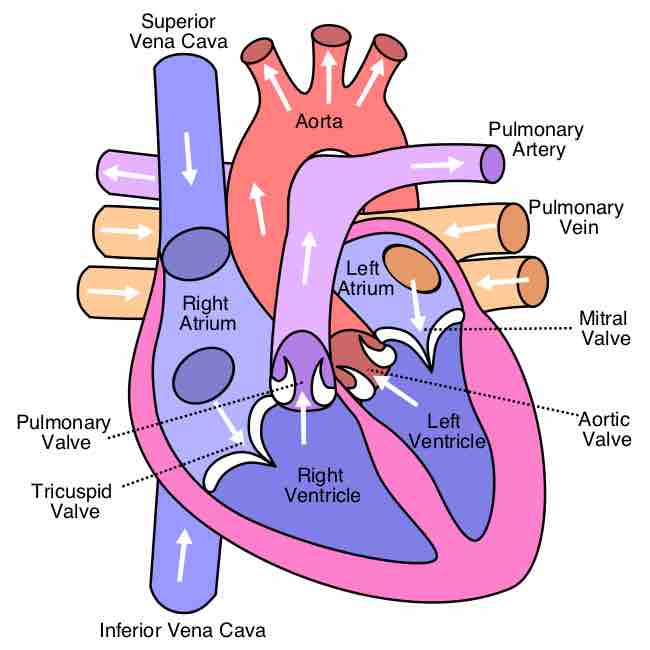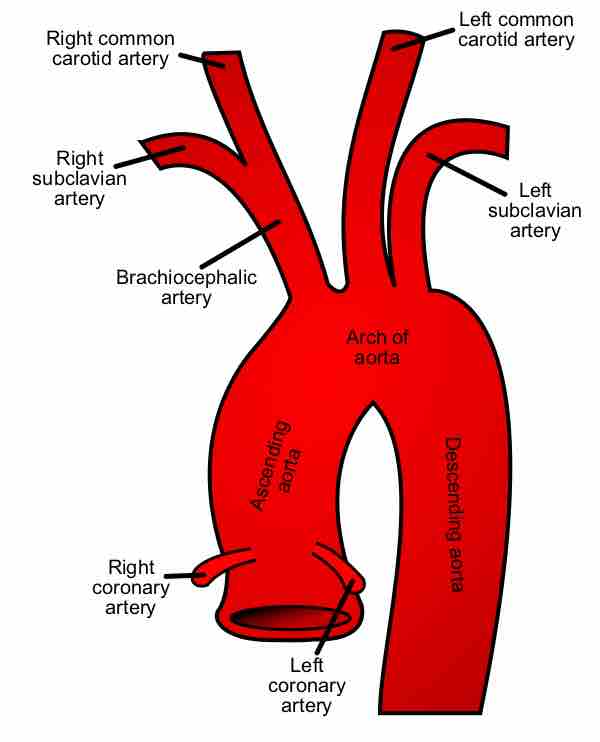The aorta is the largest artery in the systemic circulatory system. Blood is pumped from the left ventricle into the aorta and from there branches to all parts of the body. The aorta is an elastic artery, meaning it is able to distend. When the left ventricle contracts to force blood into the aorta, the aorta expands. This stretching generates the potential energy that helps maintain blood pressure during diastole, since during this time the aorta contracts passively.

Diagram of Human Heart
This diagram of the human heart shows all the major vessels, and arrows indicate the direction of flow through the heart.
The aorta is divided into three parts: the ascending aorta, where the aorta initially leaves the heart and points superiorly toward the head; the arch of the aorta where the aorta changes direction; and the descending aorta where the aorta points inferiorly toward the feet.

Ascending Aorta
The aorta has three parts: the ascending, the arch and the descending.
The ascending aorta has two small branches, the left and right coronary arteries. These arteries provide blood to the heart muscle, and their blockage is the cause myocardial infarctions or heart attacks.
The arch of the aorta has three branches: the brachiocephalic artery, which itself divides into right common carotid artery and the right subclavian artery, the left common carotid artery, and the left subclavian artery. These arteries provide blood to both arms and the head.
The descending aorta is the largest artery in the body; it runs from the heart down the length of the chest and abdomen. It is divided into two portions, the thoracic and abdominal, in correspondence with the two great cavities of the trunk in which it sits. Within the abdomen, the descending aorta branches into the two common iliac arteries that provide blood to the pelvis and, eventually, the legs.